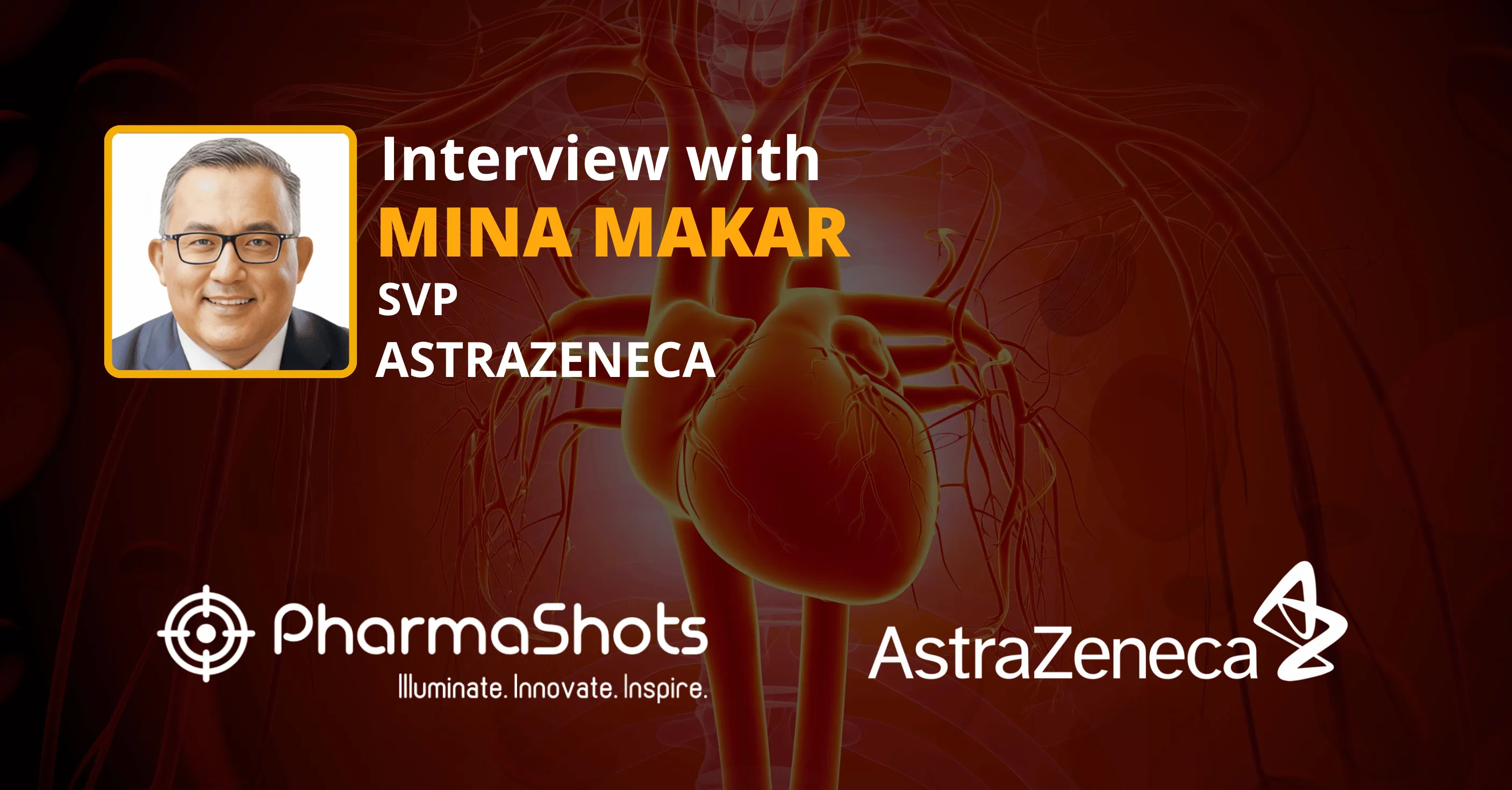
Increasing Accessibility: Jeffrey Lengyel from Thermo Fisher Scientific, in an Enlightening Conversation with PharmaShots
Shots:
-
Advances in Cryo-EM help better understand biological molecules and complexes at atomic resolution. Thermo Fisher Scientific’s recently launched Glacios 2 Cryo-TEM with E-CFEG offers promising potential in reducing the workflow complexities with automation
-
Today, we have Jeffrey Lengyel Director of Life Sciences, Cryo-EM, at Thermo Fisher Scientific shedding light on Glacios 2 Cryo-TEM with E-CFEG
-
Jeffrey highlights the significance of the update to Glacios 2 Cryo-TEM, a 200 kV microscope that now can generate near-atomic resolution at <2A of small molecules and proteins
Saurabh: Congratulations on successfully launching the Glacios 2 Cryo-TEM now with E-CFEG! So, before we begin, could you shed some light on Glacios 2 Cryo-TEM and the science it enables?
Jeffrey: The Thermo Scientific Glacios 2 Cryo-Transmission Electron Microscope (cryo-TEM) is a 200 kV microscope that allows structural biologists in biopharmaceutical and academic research who need high quality structural data at high throughput to easily collect near atomic data from a broad range of biological targets. With the expanded offering of our low-energy-spread cold FEG (Thermo Scientific E-CFEG), the Glacios 2 Cryo-TEM can accelerate cryo-EM research and drug discovery with high-resolution structural data for protein structure determination and single particle analysis.
To further enable scientific discoveries, the Glacios 2 Cryo-TEM with E-CFEG reduces workflow complexities with automation, which allows users of various experience levels to efficiently produce consistently excellent data. In fact, new data using this combination demonstrates its ability to generate a 1.5 Å resolution structure of Apoferritin, which is currently the highest resolution structure generated from a commercially available cryo-TEM operating at 200kV.
When we were developing the Glacios 2 Cryo-TEM, we worked with Dr. Basil Greber at the Institute of Cancer Research in London to study a key drug target for cancer therapeutics. This collaboration helped us optimize the microscope with drug discovery in mind and aided in the decision to increase speed and throughput on the instrument to allow biologists to collect a large amount of data and enable structure-based drug design. Today, the Glacios 2 Cryo-TEM is helping researchers across the pharmaceutical industry speed up rational drug design, which enables pharmaceutical companies to complete their goal of getting life-saving therapies to patients faster.
Saurabh: Can you highlight the most recent updates made to the Glacios 2 Cryo-TEM and why it matters?
Jeffrey: The addition of the E-CFEG to the Glacios 2 Cryo-TEM offers three major updates: higher resolution for near-atomic structural determination of complex proteins and macromolecules, improved throughput to accelerate cryo-EM research, and reduced workflow and operational complexities to allow users of all experience levels to consistently capture high-quality data.
We also made improvements to the hardware, which allow for increased speed and stability, and the team added new optical modes to aid higher throughput. It also features an integrated Thermo Scientific Selectris imaging filter combined with the Thermo Scientific Falcon 4i Direct Electron Detector, which greatly improves the contrast and furthers the resolution, and the Thermo Scientific EPU Software for automated data collection and enhanced user experience.
Saurabh: So far as EM is concerned, the key focus always remains imaging quality. How is Glacios 2 Cryo-TEM going to enhance the imaging experience of users?
Jeffrey: The Glacios 2 Cryo-TEM is a powerful instrument on its own, but with the addition of E-CFEG, scientists can generate near-atomic resolution at <2A of small molecules and proteins.
What’s also unique about the Glacios 2 Cryo-TEM is the users’ experience. The microscope was designed with overall ease of use in mind so there are user-friendly features such as auto-alignment and the ability to queue up multiple data collections in a single run. This is essential for those in drug discovery applications and other emerging areas of research because it allows these scientists to maximize the utility of the instrument without extensive training or requiring specialized individuals to support this research. The microscope was also designed with a minimal interface so that researchers can spend more time focused on their samples rather than data acquisition or processing. It’s a tool with powerful imaging potential that’s designed for both novice and experienced users.
Saurabh: Would you give our readers details about the developing phase? What went into the development of Glacios 2 Cryo-TEM and now the addition of the E-CFEG?
Jeffrey: As a stalwart partner to the scientific community and an enabler of scientific discovery, our customers’ needs are our roadmap to innovation. When we were developing the Glacios 2 Cryo-TEM, we listened to the evolving needs and requirements of the community and incorporated their feedback into our development plan. For instance, we found that the enclosure on the original Glacios microscope sometimes affected environmental stability, so we refined the design to meet the needs of the users.
We also wanted to ensure that our customers could generate the highest quality data, so we looked at the factors that limited throughput and resolution on other instruments to help us design the Glacios 2 Cryo-TEM. The E-CFEG was an important enhancement for users to be able to generate near-atomic resolution on a 200kv microscope.
When we think about product design, our overarching goal is to provide an accessible instrument that allows researchers to advance science. The Glacios 2 Cryo-TEM was designed to offer a smooth imaging experience with reduced effort, which fits perfectly into our ecosystem of automation.
Saurabh: What were the challenges you faced during the development phase?
Jeffrey: We started the design process for the Glacios 2 Cryo-TEM several years ago, which means that we were working on this project during the COVID-19 pandemic. So, as many did, we experienced disruptions and operating challenges with a newly remote and dispersed team.
That said, Thermo Fisher Scientific was dedicated to collaborating with customers to keep innovation moving forward during this time. We were able to quickly pivot to virtual work and remained in contact with customers and scientists on a regular basis, embracing different ways of engagement to keep scientific discovery at the forefront of our work.
Saurabh: Can we talk about other cryo-TEMs developed by Thermo Fisher, and are you planning to explore more areas in the industry? What's next?
Jeffrey: We have a portfolio of cryo-TEMs that offer both flexibility and connectivity. For example, the Thermo Scientific Tundra Cryo-TEM—our 100kV solution—is a dedicated structural analysis solution designed for accessibility. It’s a powerful tool that allows for on-site structural analysis with simplified data collection and rapid sample loading/unloading, but it can also help researchers reliably prepare high-quality samples for further analysis on a Thermo Scientific Krios Cryo-TEM, a 300kv platform, or Glacios Cryo-TEM.
In many cases, we're not just providing an instrument, we’re providing a solution and expert guidance to solve a biological problem. This means that our tools from sample preparation to smart software to our highest resolution microscopes are all pieces of the puzzle, and we are constantly listening to our customers to learn how we can evolve and improve our solutions to best support scientific research.
Image Source: Canva
About the Author:

Jeff Lengyel is the Director of Life Sciences, Cryo-EM, at Thermo Fisher Scientific. Jeff received his Ph.D. in Biochemistry from the Univ. of Cambridge (UK) as a Univ. of Cambridge/National Institutes of Health, Health Sciences Scholar. He has over 20 years of experience in cryo-electron microcopy.
Related Post: Kylen Cieslak and Robert Ley Discuss the Expansion of Thermo Fisher Scientific’s Services Central in the US & EU
Tags

Saurabh is a Senior Content Writer at PharmaShots. He is a voracious reader and follows the recent trends and innovations of life science companies diligently. His work at PharmaShots involves writing articles, editing content, and proofreading drafts. He has a knack for writing content that covers the Biotech, MedTech, Pharmaceutical, and Healthcare sectors.














